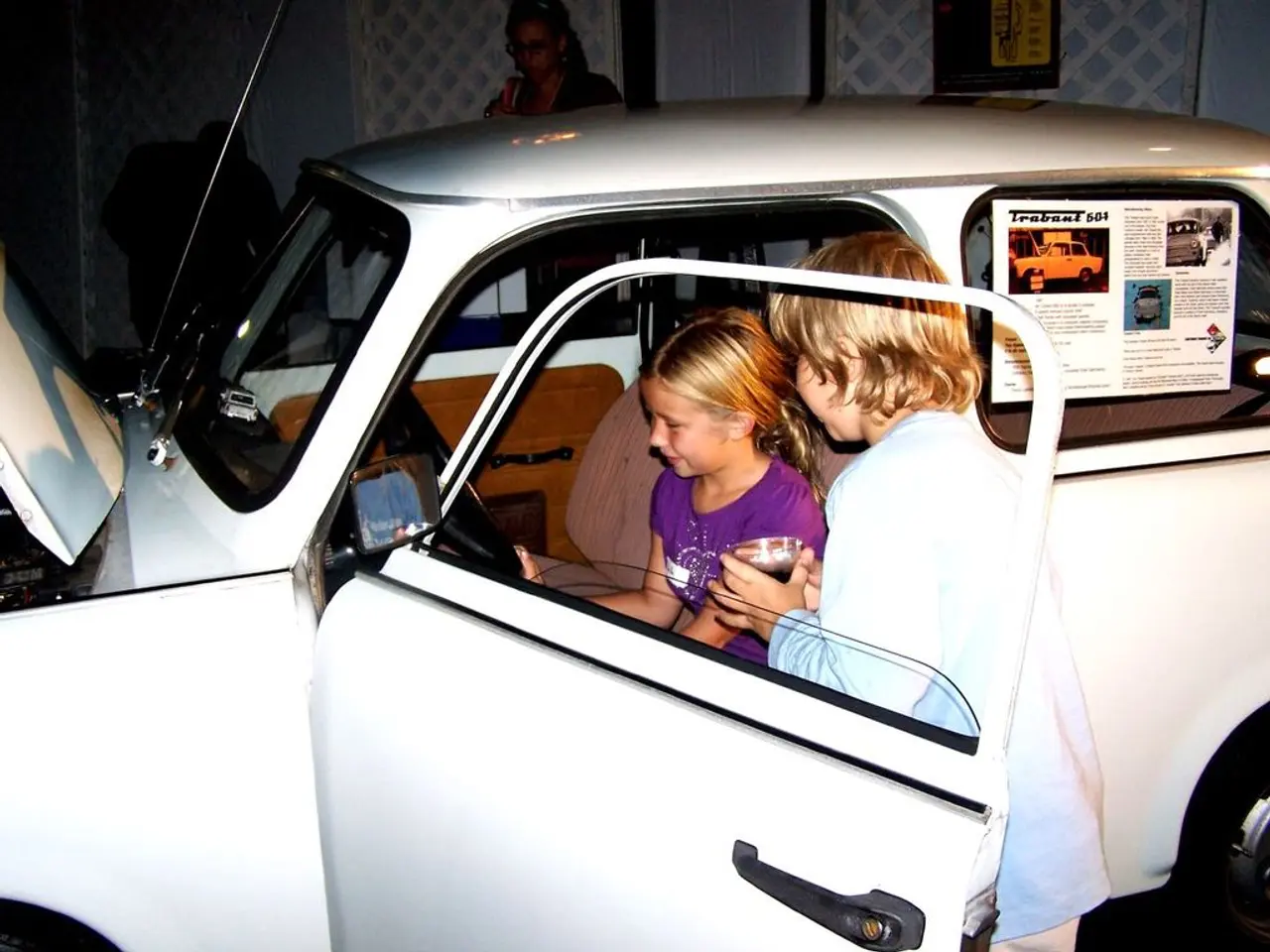Aircraft Travel with Child's Car Seat: A Handy Guide
Bringing Child Car Seats on Holiday Flights: A Comprehensive Guide
Travelling with young children can be a challenging task, but with the right preparation, it can be made easier and safer. Here's a guide to help you navigate the rules and regulations when bringing a child car seat on holiday flights.
According to IAM RoadSmart, a UK driving and road safety organisation, it's highly recommended to use a car seat or child restraint system on board for safety. However, there are important guidelines to follow. Children over the age of 2 must have their own paid seat, and the car seat must be FAA-approved, meaning it meets Federal Motor Vehicle Safety Standards and is certified for use in motor vehicles and aircraft. Booster seats, typically, are not allowed on planes.
When using a car seat on board, airlines often restrict placement to specific seats for safety and emergency access reasons. Car seats cannot be placed in aisle seats, emergency exit rows, or seats immediately in front of or behind exit rows. Window seats are preferred for car seats as they help avoid blocking others and offer more comfort to the child. Some airlines also have maximum width restrictions for car seats to fit into airplane seats, often around 16 to 17.5 inches depending on the aircraft.
If you do not bring a car seat on board, airlines generally allow you to check the car seat as luggage at no extra cost, but careful packing is essential to avoid damage. Using a travel bag designed for car seats can protect it during handling.
IAM RoadSmart offers some travel tips to make the journey fun. They suggest asking children to look for landmarks or play a game of I-Spy. Packing children's favorite toys, games, and books can also help keep them entertained.
When driving abroad with children, IAM RoadSmart advises planning the journey carefully, perhaps arranging travel to coincide with nap time or bedtime for long distances to make for a more relaxing drive. They also suggest packing snacks and considering taking a cool bag for chilled drinks.
It's essential to be familiar with the hire car and ensure the child seat is safely secured. IAM RoadSmart advises getting photos of the hired car seat to ensure it is up to standard. They also suggest contacting the hire car company to see if safety-approved seats are available at the destination.
The Civil Aviation Authority advises that children under the age of two must be secured during the flight. Children under the age of two must be secured whenever the seatbelt sign is on during a flight. Wrapping the car seat is essential to avoid damage during the flight.
Each airline has its own policies, so it's crucial to check the specific airline’s policy before travel. For instance, Ryanair allows one pushchair and one of car seat, booster seat, or travel cot for free, but other baby equipment must be checked in and paid for. EasyJet allows two child items for free, including a travel cot, pushchair, car seat, booster seat, or baby back carrier. British Airways allows two collapsible pushchairs, car or booster seats, travel cots, or baby back carriers as checked baggage.
In summary, to bring a child car seat on holiday flights:
- Confirm your child has their own paid seat if over age 2 and plan to use a car seat or restraint for safety.
- Use only FAA-approved car seats labeled for aircraft use.
- Book a window seat or suitable seat approved by your airline, avoiding aisle and exit rows.
- Check the seat width restriction for your specific airline and aircraft.
- If not using the seat on board, check it as baggage with careful packing.
- Always check the specific airline’s policy before travel, as rules and seat dimensions vary.
These guidelines apply broadly to U.S. airlines but may differ internationally, so consulting your airline ahead of time is essential for the most accurate and current information.
- Driving an electric SUV for family outings can be a health-and-wellness practice, providing a eco-friendly transportation option while promoting fitness-and-exercise during family trips.
- In the realm of lifestyle and family-dynamics, it's important to prioritize mental-health and parenting, ensuring a balanced and harmonious environment for all family members.
- When driving your car abroad, it's essential to stay informed about the local road rules and regulations for the safety of your family and adherence to the laws of the country.
- To keep your children entertained during long car journeys, consider incorporating health-and-wellness activities such as playing fitness-and-exercise games, or engaging in health-related discussions about family-health and lifestyle choices.
- As parents, it's crucial to consider the importance of mental-health and relationship-building within our families, making efforts to maintain open communication and fostering a supportive and loving environment.
- The science behind vehicle safety dictates that it's recommended to use a car seat or child restraint system, not just during flights, but for overall driving safety and the well-being of young passengers.
- When choosing a van for purposes of family travel, opt for an electric or hybrid model to contribute positively to the environment and reduce your carbon footprint, aligning with health-and-wellness values and promoting family-dynamics that prioritize social responsibility.
- For parents concerned about their children's mental-health while traveling, simple techniques such as playing games like I-Spy or incorporating educational discussions about various aspects of life can facilitate a positive travel experience and contribute to overall mental-wellness.
- When planning a vacation, be mindful of the need for travel-friendly car seats to ensure the well-being and safety of your children during the journey, whether you're flying or driving an electric SUV or van.




